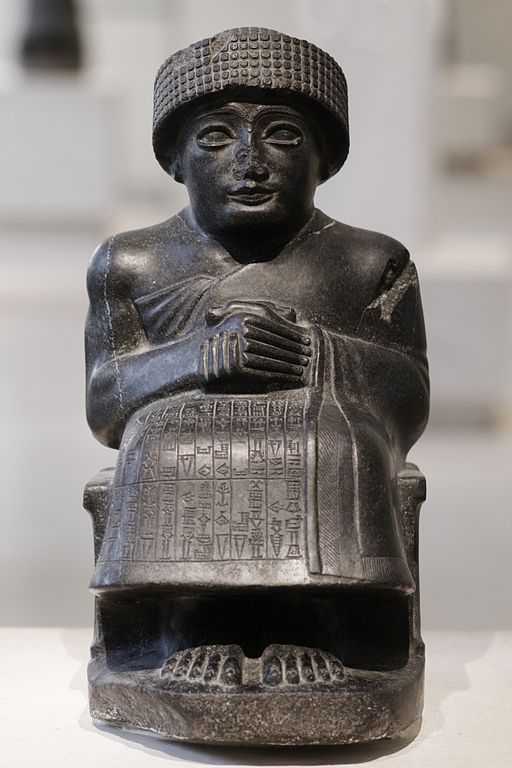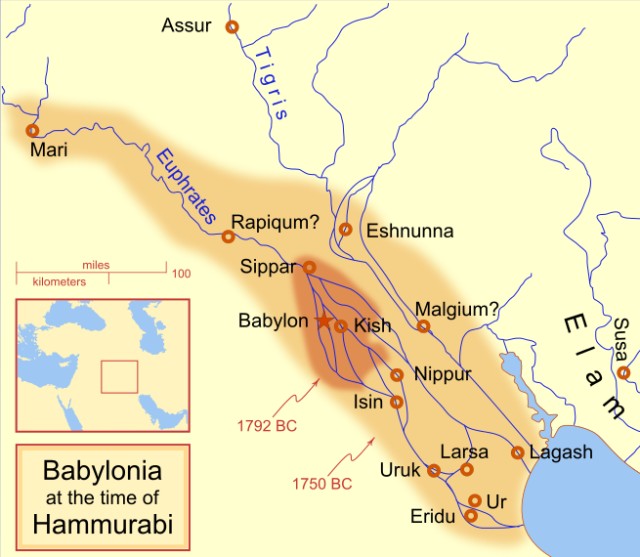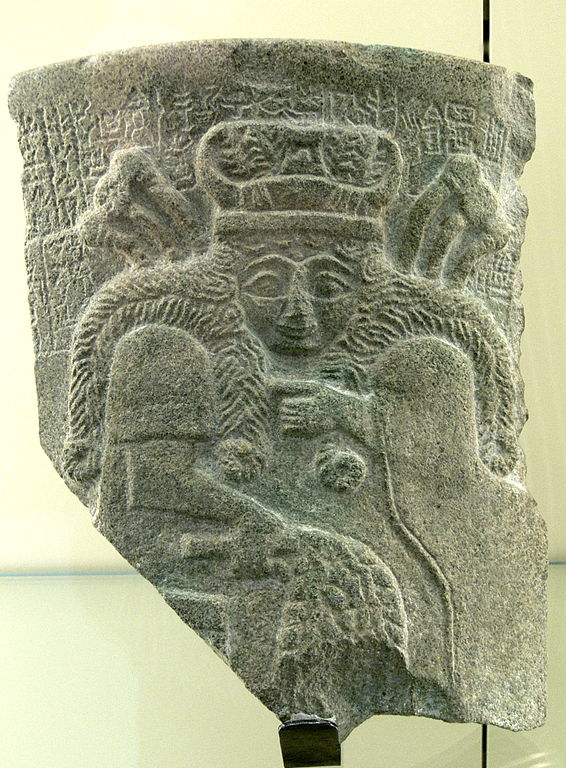
| LAGESH
Lagash
Lagash
Lagash (cuneiform: LAGAŠKI; Sumerian: Lagaš), or Shirpurla, was an ancient city state located northwest of the junction of the Euphrates and Tigris rivers and east of Uruk, about 22 kilometres (14 mi) east of the modern town of Ash Shatrah, Iraq. Lagash (modern Al-Hiba) was one of the oldest cities of the Ancient Near East. The ancient site of Nina (modern Surghul) is around 10 km (6.2 mi) away and marks the southern limit of the state. Nearby Girsu (modern Telloh), about 25 km (16 mi) northwest of Lagash, was the religious center of the Lagash state. Lagash's main temple was the E-Ninnu, dedicated to the god Ningirsu. Lagash seems to have incorporated the ancient cities of Girsu, Nina, Uruazagga and Erim.
History
:
Location of Lagash before the expansion of the Akkadian Empire (in green). The territory of Sumer appears in orange. Circa 2350 BCE
The name Lagash Ki ("Country of Lagash") on inscriptions of Gudea, in monumental linear script and cuneiform script on clay After the collapse of Sargon's state, Lagash again thrived under its independent kings (ensis), Ur-Baba and Gudea, and had extensive commercial communications with distant realms. According to his own records, Gudea brought cedars from the Amanus and Lebanon mountains in Syria, diorite from eastern Arabia, copper and gold from central and southern Arabia, while his armies were engaged in battles with Elam on the east. His was especially the era of artistic development. We even have a fairly good idea of what Gudea looked like, since he placed in temples throughout his city numerous statues or idols depicting himself with lifelike realism, (Statues of Gudea). At the time of Gudea, the capital of Lagash was actually in Girsu. The kingdom covered an area of approximately 1,600 square kilometres (620 sq mi). It contained 17 larger cities, eight district capitals, and numerous villages (about 40 known by name). According to one estimate, Lagash was the largest city in the world from c. 2075 to 2030 BC.
Soon after the time of Gudea, Lagash was absorbed into the Ur III state as one of its prime provinces. There is some information about the area during the Old Babylonian period. After that it seems to have lost its importance; at least we know nothing more about it until the construction of the Seleucid fortress mentioned, when it seems to have become part of the Iranian kingdom of Characene.
First dynasty of Lagash (c.2500 - 2300 BCE) :
Relief of Ur-Nanshe. At the top he creates the foundation for a shrine, at the bottom he presides over the dedication (Louvre)
Eannatum, King of Lagash, riding a war chariot (detail of the Stele of the Vultures). His name "Eannatum" is written vertically in two columns in front of his head. Louvre Museum
Entemena's inscribed Silver Vase, c. 2400 BCE (Louvre) The dynasties of Lagash are not found on the Sumerian King List, although one extremely fragmentary supplement has been found in Sumerian, known as The Rulers of Lagash. It recounts how after the flood mankind was having difficulty growing food for itself, being dependent solely on rainwater; it further relates that techniques of irrigation and cultivation of barley were then imparted by the gods. At the end of the text is the statement "Written in the school", suggesting this was a scribal school production. A few of the names from the Lagash rulers listed below may be made out, including Ur-Nanshe, "Ane-tum", En-entar-zid, Ur-Ningirsu, Ur-Bau, and Gudea.
The First dynasty of Lagash is dated to the 26th century BCE. En-hegal is recorded as the first known ruler of Lagash, being tributary to Uruk. His successor Lugal-sha-engur was similarly tributary to Mesilim. Following the hegemony of Mesannepada of Ur, Ur-Nanshe succeeded Lugal-sha-engur as the new high priest of Lagash and achieved independence, making himself king. He defeated Ur and captured the king of Umma, Pabilgaltuk. In the ruins of a building attached by him to the temple of Ningirsu, terracotta bas reliefs of the king and his sons have been found, as well as onyx plates and lions' heads in onyx reminiscent of Egyptian work. One inscription states that ships of Dilmun (Bahrain) brought him wood as tribute from foreign lands. He was succeeded by his son Akurgal.
Eannatum, grandson of Ur-Nanshe, made himself master of the whole of the district of Sumer, together with the cities of Uruk (ruled by Enshakushana), Ur, Nippur, Akshak, and Larsa. He also annexed the kingdom of Kish; however, it recovered its independence after his death. Umma was made tributary—a certain amount of grain being levied upon each person in it, that had to be paid into the treasury of the goddess Nina and the god Ningirsu. Eannatum's campaigns extended beyond the confines of Sumer, and he overran a part of Elam, took the city of Uru'az on the Persian Gulf, and exacted tribute as far as Mari; however, many of the realms he conquered were often in revolt. During his reign, temples and palaces were repaired or erected at Lagash and elsewhere; the town of Nina [citation needed]—that probably gave its name to the later Niniveh—was rebuilt, and canals and reservoirs were excavated. Eannatum was succeeded by his brother, En-anna-tum I. During his rule, Umma once more asserted independence under Ur-Lumma, who attacked Lagash unsuccessfully. Ur-Lumma was replaced by a priest-king, Illi, who also attacked Lagash.
His son and successor Entemena restored the prestige of Lagash. Illi of Umma was subdued, with the help of his ally Lugal-kinishe-dudu or Lugal-ure of Uruk, successor to Enshakushana and also on the king-list. Lugal-kinishe-dudu seems to have been the prominent figure at the time, since he also claimed to rule Kish and Ur. A silver vase dedicated by Entemena to his god is now in the Louvre. A frieze of lions devouring ibexes and deer, incised with great artistic skill, runs round the neck, while the Anzû crest of Lagash adorns the globular part. The vase is a proof of the high degree of excellence to which the goldsmith's art had already attained. A vase of calcite, also dedicated by Entemena, has been found at Nippur. After Entemena, a series of weak, corrupt priest-kings is attested for Lagash. The last of these, Urukagina, was known for his judicial, social, and economic reforms, and his may well be the first legal code known to have existed.
The cuneiform text states that Enannatum I reminds the gods of his prolific temple achievements in Lagash. Circa 2400 BCE. From Girsu, Iraq. The British Museum, London
The name "Lagash" in vertical cuneiform of the time of Ur-Nanshe
The Anzû, symbol of Lagash, in a Master of Animals motif, at the time of Entemena Border conflict with Umma (c. 2500 - 2300 BCE) :
Vase
of King Gishakidu, king of Umma, and son of Ur-Lumma, giving the
city of Umma's account of its long-running border dispute with Lagash.
The vase redefines the frontier by recording the locations of stelae
to the god Shara, as well as the distances between them. Circa 2350
BCE. From Umma, Iraq. Ref. 140889, British Museum, London.
The armies of Lagash led by Eannatum in their conflict against Umma
Lancers of the army of Lagash against Umma Destruction of Lagash by the Akkadian Empire (circa 2300 BCE) :
Fragments
of the Victory Stele of Rimush. The Victory Stele also has an epigraphic
fragment, mentioning Akkad and Lagash. It suggests the stele represents
the defeat of Lagash by the troops of Akkad.
Sargon's son and successor Rimush faced widespread revolts, and had to reconquer the cities of Ur, Umma, Adab, Lagash, Der, and Kazallu from rebellious ensis.
Rimush introduced mass slaughter and large scale destruction of the Sumerian city-states, and maintained meticulous records of his destructions. Most of the major Sumerian cities were destroyed, and Sumerian human losses were enormous: for the cities of Ur and Lagash, he records 8,049 killed, 5,460 "captured and enslaved" and 5,985 "expelled and annihilated".
Stele
of the victory of Rimush over Lagash :
Possible victory stele of king Rimush (front) Generally attributed to Rimush on stylistic grounds
Detail
Man of Lagash, circa 2270 BCE, from the Victory Stele. The same hairstyle can be seen in other statues from Lagash Second dynasty of Lagash (c. 2230 – 2110 BCE) :
This period lasted c. 2230–2110 BCE (Middle chronology). These rulers achieved a Sumerian revival, following the rise and fall of the Semitic Akkadian Empire, and the conquests of the Gutian dynasty. The Second dynasty of Lagash rose at the time the Gutians were ruling in central Mesopotamia. The rulers of Lagash, only taking the title of Ensi, or Governors, achieved to maintain a high level of independence from the Gutians in the southernmost areas of Mesoptamia. Under Gudea, Lagash had a golden age, and seemed to enjoy a high level of independence from the Gutians.
Archaeology :
At the time of Hammurabi, Lagash was located near the shoreline of the gulf
Goddess Nisaba with an inscription of Entemena, ruler of Lagash (2430 BCE), steatite, Vorderasiatisches Museum Berlin Lagash is one of the largest archaeological mounds in the region, measuring roughly 3 by 1.5 km (2 by 1 mi). Estimates of its area range from 400 to 600 hectares (990 to 1,480 acres). The site is divided by the bed of a canal/river, which runs diagonally through the mound. The site was first excavated, for six weeks, by Robert Koldewey in 1887. It was inspected during a survey of the area by Thorkild Jacobsen and Fuad Safar in 1953, finding the first evidence of its identification as Lagash. The major polity in the region of al-Hiba and Tello had formerly been identified as ŠIR.BUR.LA (Shirpurla). Tell Al-Hiba was again explored in five seasons of excavation between 1968 and 1976 by a team from the Metropolitan Museum of Art and the Institute of Fine Arts of New York University. The team was led by Vaughn E. Crawford, and included Donald P. Hansen and Robert D. Biggs. The primary focus was the excavation of the temple Ibgal of Inanna and the temple Bagara of Ningirsu, as well as an associated administrative area.
The team returned 12 years later, in 1990, for a final season of excavation led by D. P. Hansen. The work primarily involved areas adjacent to an, as yet, unexcavated temple. The results of this season have apparently not yet been published.
In March–April 2019, field work resumed under the University of Cambridge Lagash Archaeological Project.
Source :
https://en.wikipedia.org/ |
|||||||||||||||||||||||||||||||||||||||||||||||||||||||||||||||||||||||||||||||||||||||||||||||||||||||||||||||||||||||||||||||||||||||||||||||||||||||||||||||
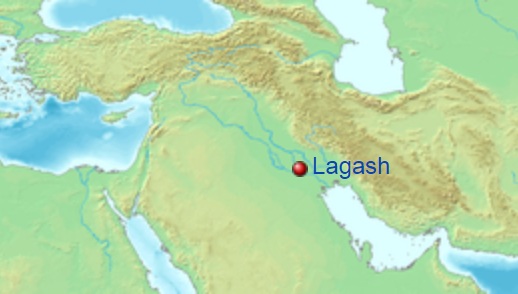
.jpg)
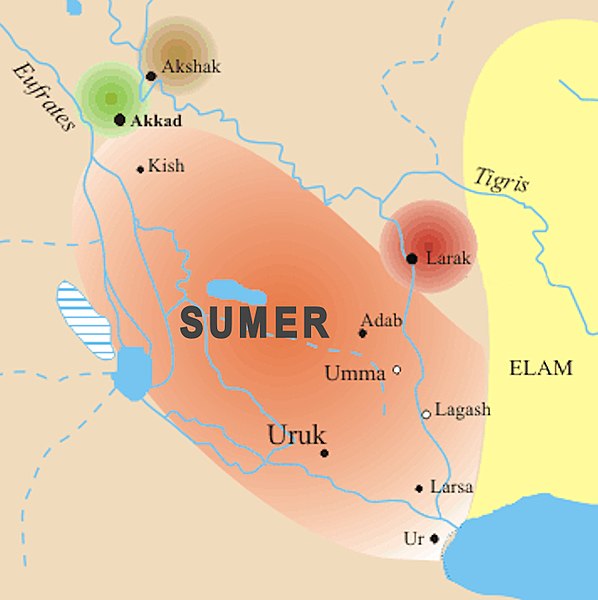
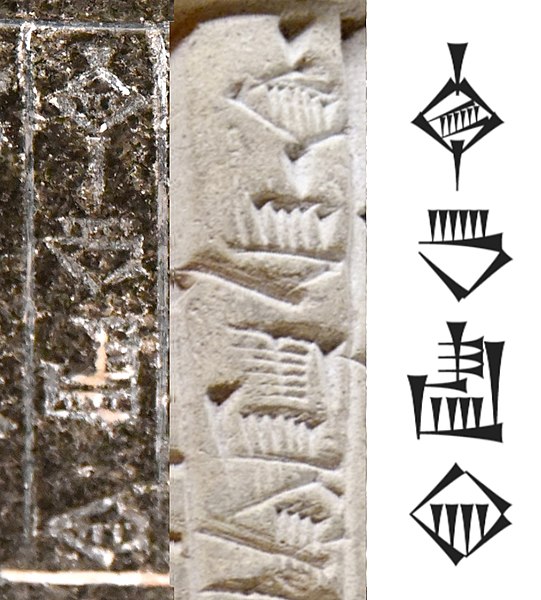
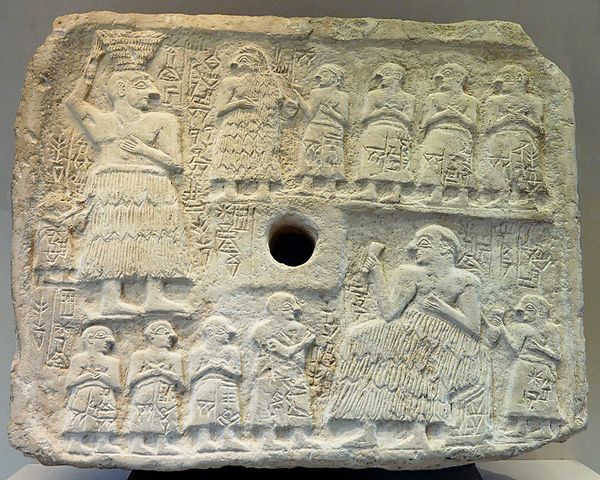
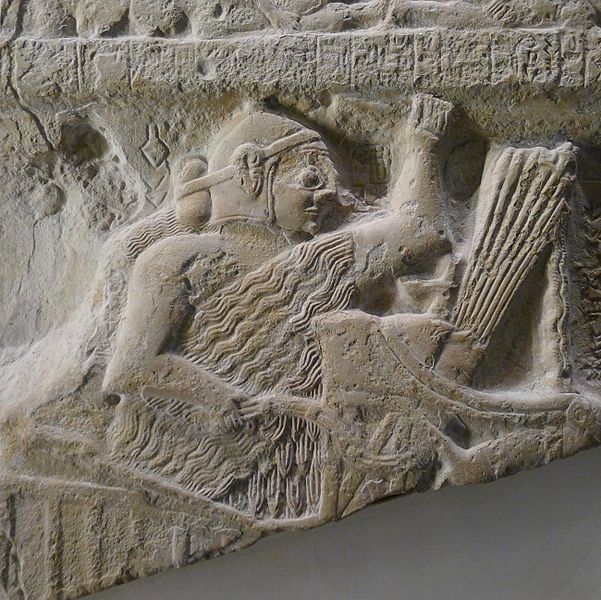
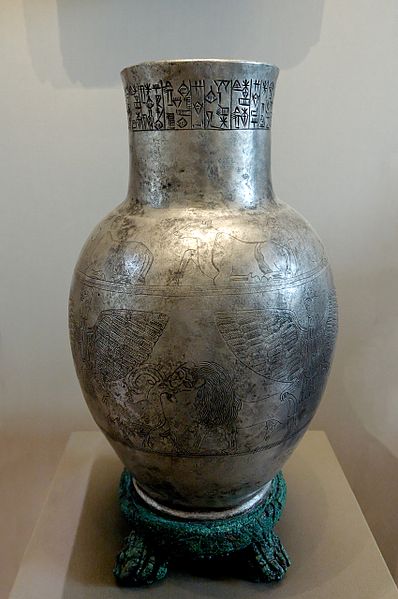





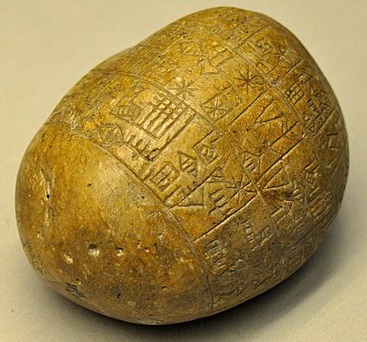
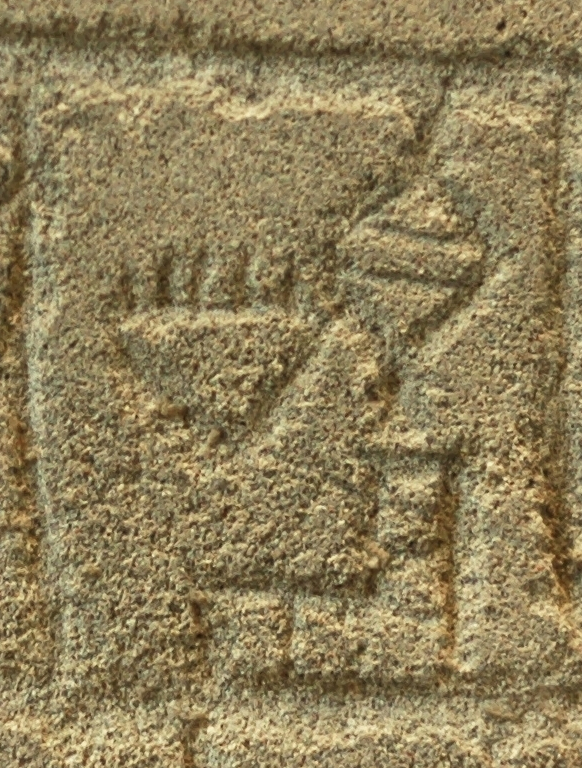
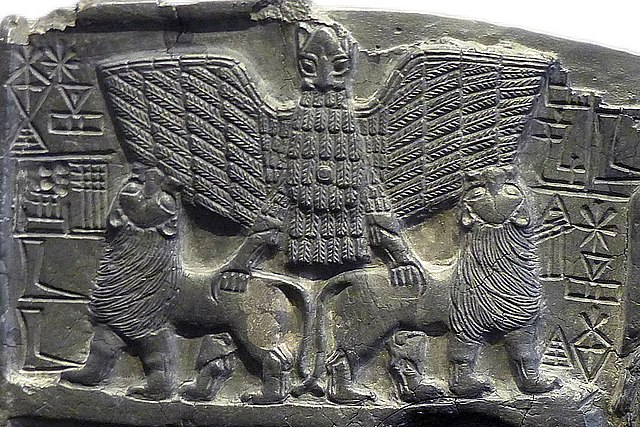
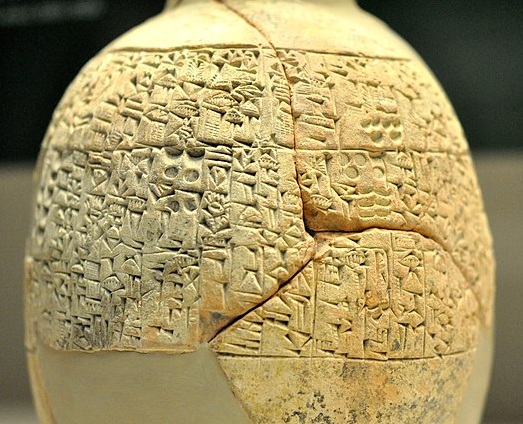
.jpg)
.jpg)
.jpg)
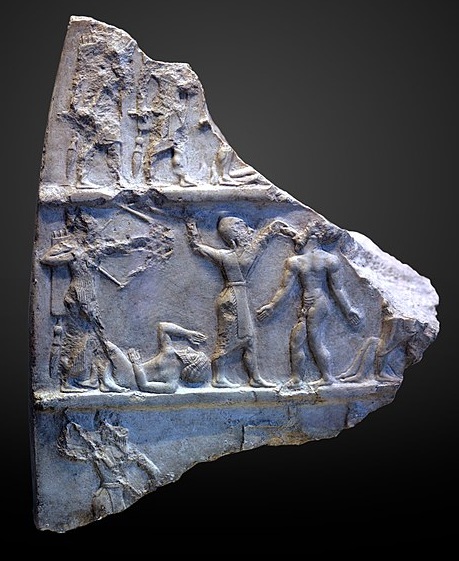
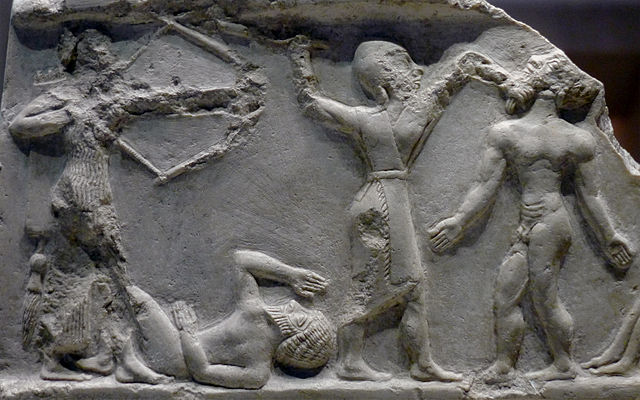
.jpg)
